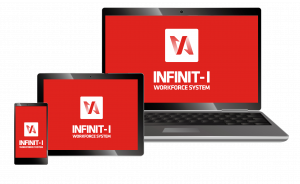Are You Prepared for a DOT Compliance Audit?
Imagine the Department of Transportation (DOT) has informed you that you will have a DOT compliance audit. Would you be ready for it?
If you aren’t prepared, you can face fines for your company and drivers, and in the worst-case-scenario you could lose your business. Proper preparation and attention to detail can help you avoid these harsh penalties though.
To be prepared, you need to understand the BASICS of CSA violations and what’s necessary to prepare for the auditor when they come. The BASICS are often overlooked but making an effort to keep them top of mind will keep your fleets running in safety and compliance.
What is a Compliance Audit?
A DOT compliance audit is an on-site examination of a motor carrier’s operations. This is done to determine if the fleet’s safety fitness standard is being met and maintained. This audit evaluates a company’s safety performance, recordkeeping, and management controls.
Who Can be Audited?
Audits can be performed on any carrier transporting at least 10,000 pounds of cargo across state lines. These audits occur to ensure trucking companies are compliant with DOT and FMCSA regulations.
The DOT audits were designed to keep the roads safer, including your drivers and your cargo. Following necessary regulations means your business continues to run safely, efficiently, and profitably.
DOT Audit Inspection Factors
During a DOT compliance audit, the auditor is going to look at six factors to ensure your company is maintaining compliance. These factors are:
- General
- Driver
- Operational
- Vehicle
- Hazardous Materials
- Accidents
You will need to have records and other documentation necessary to show you have kept up with all necessary regulations. If you can’t produce the required documentation, you will end up with a CSA violation.
General
All motor carriers are required to have liability insurance for their entire fleet. You must be able to provide documentation showing you have the proper insurance.
You will also need to show proper documentation for the type of cargo being transported by your fleet. Certain cargo requires more restrictions, and it’s important to show you have everything in place.
Driver
There are several records you need to provide during an audit for your drivers. A carrier should be able to provide documentation that all drivers have correct and up-to-date licenses.
The carrier must also maintain and provide records of drug and alcohol testing for all company drivers. This includes a good faith effort to get three years of testing results from previous employers.
Operational
Recordkeeping is essential to pass a DOT compliance audit. The DOT requires six months of logs and other supporting documentation on all drivers employed during the period under investigation.
These logs show whether drivers are in compliance with regulations such as Hours of Service. The DOT will examine them for any violations, errors, or possible falsification.
Vehicle
A commercial motor vehicle (CMV) registered with a carrier for at least 30 consecutive days must undergo regular inspections, necessary repairs, and maintenance. You are required to keep all documentation on the CMVs and the logs of all inspections, repairs, and maintenance.
The DOT will examine these reports during an audit. All reports must include basic information about the vehicle, including model, year, identification number, and tire size. You are required to keep these records on file for at least 12 months.
Hazardous Materials
The DOT is very strict when it comes to transporting hazardous materials at a certain level, as these materials can cause safety risks if not careful. A carrier must keep a record of any hazmat-related documentation for inspection purposes.
This documentation includes licenses, storage information, labels, and placards. You will also need to provide documentation that all drivers carrying hazmat materials have received proper training.
Accidents
Carriers must maintain a record of all driver accidents and injuries for DOT compliance audit review. These records will be checked for accuracy and used to confirm whether FMCSA regulations are met by you and your drivers.
It’s helpful to keep all records of the scene of the accident as well as any corrective action that was taken to reduce the chance of a recurrence.
The Safety Rating Scale
After the DOT compliance audit is concluded, you will receive one of three ratings: Satisfactory, Conditional, or Unsatisfactory.
Satisfactory Rating
A satisfactory rating means you have proper safety management controls in place to meet the safety fitness standard. Your safety management controls need to be appropriate for the size and type of operation.
Conditional Rating
A conditional rating means some part of your safety management controls are out of compliance with the safety fitness standard. This puts your company in jeopardy of fines and increased roadside inspections until you can get your company into compliance.
Unsatisfactory Rating
An unsatisfactory rating means multiple safety violations have occurred due to lack of safety controls. When carriers receive this rating, they will have their operating authority suspended. This goes into effect 15 days after the order and includes an Operation Out of Service order which keeps the carrier from operating within the U.S.
Maintaining CSA Compliance
It’s important to maintain a compliant fleet if you want to stay in operation. The best way to keep CSA violations from harming your company is an informed safety team and well-trained drivers on the road.
The Infinit-I Workforce Solutions system was designed to help you maintain safety in your trucking company. Our online training management system provides training to drivers anytime, anywhere to help them understand DOT and FMCSA regulations without disruptions to their busy schedules.
If you want to see how Infinit-I can help you reduce CSA violations and be prepared to meet all documentation needs for a DOT compliance audit, schedule a demo today.
 Do you know how the Secretary of Labor’s right to enforce the Occupational Safety and Health Act (OSHA) may potentially affect your business? More importantly, do you know the step-by-step legal process your company should follow if a citation is issued?
Do you know how the Secretary of Labor’s right to enforce the Occupational Safety and Health Act (OSHA) may potentially affect your business? More importantly, do you know the step-by-step legal process your company should follow if a citation is issued?










 Step 1: Identify Trends
Step 1: Identify Trends Step 2: Create Strategy to Target Challenges
Step 2: Create Strategy to Target Challenges Step 3: Measure Results
Step 3: Measure Results Step 4: Repeat the Process
Step 4: Repeat the Process


